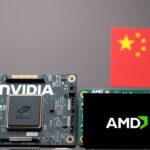
Divergent Secures $290M to Boost Military Part Production
Divergent Secures $290M to Boost Military Part Production Divergent has successfully raised $290 million in a recent funding round. This substantial investment will fuel the...


Divergent Secures $290M to Boost Military Part Production Divergent has successfully raised $290 million in a recent funding round. This substantial investment will fuel the...

Alphabet’s Market Cap Soars to $3 Trillion Alphabet Google’s parent company has achieved a significant milestone reaching a $3 trillion market capitalization. This surge reflects...

Can Rodatherm Energy Revolutionize Geothermal Affordability? Rodatherm Energy is on a mission: to enhance the efficiency of geothermal energy. But a crucial question remains –...

Nothing Closes $200M Series C Round Nothing has successfully closed a $200 million Series C funding round, spearheaded by Tiger Global. This significant investment fuels...

US and China Agree on TikTok Framework Deal The United States and China have reportedly reached a preliminary agreement on a framework for TikTok. Specifically...

PayPal Expands Payment Options with Crypto-Ready Links PayPal is enhancing its payment capabilities by introducing new one-to-one payment links. Soon, these links will support cryptocurrency...

Luxury Group Kering Confirms Hack Kering, the multinational corporation that owns high-end fashion brands like Gucci and Balenciaga, recently confirmed a cyberattack. The company detected...